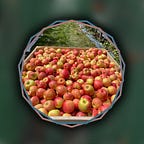How to Pick Apples
Harvesting apples can be difficult, regardless of whether you are a farmer or just a backyard grower. The storage, texture, color change, and freshness of the fruit are only a few of the many elements that influence its quality. Here are some suggestions to assist you in selecting the best apples for your harvest. Apple ripeness can vary significantly depending on where you are harvesting.
Based on the fruit’s size, color, and texture, you should be able to determine when to harvest it. No matter where you are harvesting, you must be sure to take out any rotten, damaged, or unripe fruit. By doing this, you’ll be able to preserve the remainder of the fruit’s quality for eating or storing.
An excellent ripeness indicator for apples is the color of their skin. The fact that red apples aren’t always ripe must be noted. Some kinds have a higher propensity to mature before they attain their best flavor.
Fruit should be firm, juicy, and crisp when it is fully ripe. A ripe apple should also be edible without the need to gnaw on the skin. Ethylene, a ripening substance that occurs naturally, is to blame for this.
The amount of starch present in the apple should be taken into account while choosing one. The juice will be less sweet if the fruit has more starch than it requires.
Color can be misleading when it comes to apple harvesting. Although the colors red and green are reliable markers of maturity, several cultivars will change color before they are fully ripe.
It matters how a color evolves as it develops. They are in charge of the apple’s marketability and quality after storage. Additionally, increasing photosynthetic efficiency contributes to fruit color promotion.
Fruit’s color is based on how much pigment it contains. Anthocyanins, beta-carotene, and chlorophyll are some of them. During ripening, these ingredients become more concentrated.
At maturity, certain types will have a crimson flush. Others will change color. Regarding an apple’s hue, there are no absolutes. Knowing the various hues and colors associated with each type is critical for this reason.
The amount of leafy green on the fruit’s surface is one of the most crucial signs of ripeness. Depending on the kind, this may or may not be evident.
During harvest and storage, a number of different apple varieties display a variety of fruit textures. A number of experiments were carried out to better understand how texture affects post-harvest performance and consumer preferences. In order to investigate the genetics of apple fruit texture, a genetic method was used in the study.
A genome-wide association study involving 233 apple accessions was conducted. We found and verified QTLs linked to mechanical and auditory qualities. Three separate experiments were used to collect all the data.
Comparing the two methods led to the discovery of genomic intervals related to mechanical and auditory characteristics. These cultivars’ gene expression profiles suggested a potential function for candidate genes for controlling fruit texture.
A few crucial procedures are necessary to maintain apple freshness for as long as possible. The most important step is to keep them preserved in a dark, cool, and humid area. They won’t rust or spoil as a result of this.
Apples can be kept in a big plastic bag, which is one of the simplest methods. To allow the fruit to breathe, the bag should contain openings. The holes will aid in the escape of ethylene gas.
A comparative investigation of the mechanical and acoustic characteristics of the same apple varieties hinted at a potential relationship between the two characteristics. Additionally, measurements and comparisons were made of the pulp cells’ morphological characteristics. The amount of intercellular space and cell size are correlated. The association might not apply to all fruits, though.
Apples can also be stored in the crisper drawer of your refrigerator. About 30 degrees Fahrenheit should be the temperature inside the refrigerator. If you’re unsure, you can check the temperature of the refrigerator with a thermometer.
You can keep your apples in a cool, moist cellar or closet if you don’t have a refrigerator. A decent alternative is the unheated garage. Use a damp paper towel to cover the apples if the temperature in your closet becomes too low.
Apples can be wrapped in butcher paper or brown paper bags individually. As a substitute for a crate, you can use sawdust or wet sand. To make sure your apples aren’t going bad, make sure to inspect them frequently.
